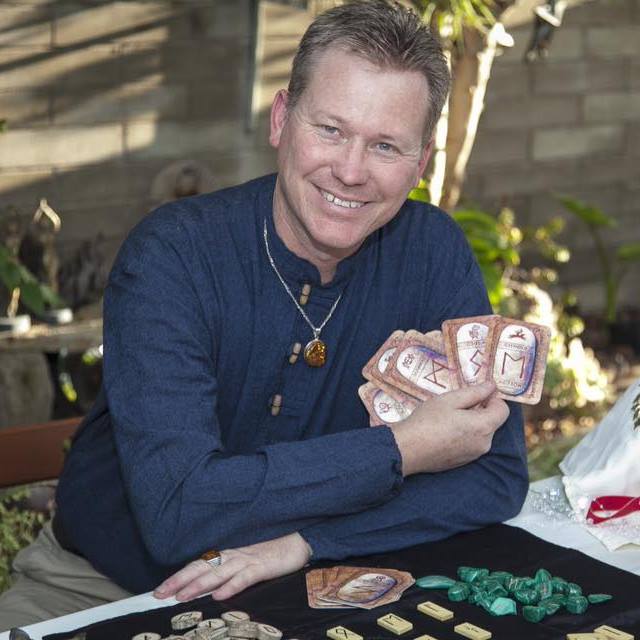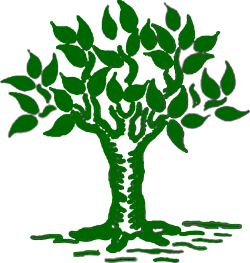Myths of Druidry by John Hijatt
Modern Druidry is a broad topic that has many shapes and incarnations depending on when and with whom one practices or studies it. It is as varied and eclectic as any other religious group today, including Pagan, Christian, Judeo, or Muslim based faiths. “Druid” is a Gaelic term meaning “oak knowledge” or “thorough knowledge”. It is a term used to cover many different views today from Celtic reconstruction to pan-indo European faith practices.
The past 300 years has seen an interest in Druidry since the reformation and enlightenment into other than Christian practices (often called “occult” by the dominant Christian faiths). An interest in the origins of Stonehenge in the mid 17th century began a connection of it to Celtic Druids by John Aubrey. Later, speculation, rumors, legends, myths, and fabrication about the Celts and their culture developed many of the myths and ideas we hold today. These speculations inspired the formation of groups and societies around Druid lore. Groups such as the Ancient Order of Druids, founded in the late 18th century, were based on Masonic ritual, practices and organization but given a Celtic flair. The interest in the “occult” crossed the ocean and became popular in America, including Druidry and societies formed here as well. Along with these new societies the idea of an unbroken line of Druidry surfaced. These groups grew, split, evolved or disbanded over the years leaving many myths and misunderstandings of Druidry and Celtic spirituality.
Some of these include:
- Druids being a religious class of priests in white robes.
- Druids as being only men.
- Druids being patriarchs of the Bible or from Atlantis.
- Unbroken line of Druid succession.
- A study program of 20 years before becoming declared a "Druid".
- The Druids built Stonehenge.
Most of these myths about Druids are easily exposed today by archeological evidence and review of ancient texts. Though Celtic people were largely oral historians, Celtic “converts” to Christianity preserved ideas of the ancient Celtic practices in the early Christian eras. Druids were more than just the male religious leaders of the early Celts, they were men and women of the learned class: judges, historians, poets, teachers, doctors, lawyers, etc. This was one of the three classes in Celtic society (Druid, Warrior, Producer). These three classes were equal in their importance to the survival of the clans and each person had their place in clan. The Celts arrived in northern Europe (Ireland, Scotland, Britain) about 1000-1200 BCE (long after Stonehenge was built) having traceable origins to Mesopotamia and Greece.
Today many Druid groups exist to continue the earth based polytheistic faith. These groups utilize practices influenced by the old ways as best we can know them from current evidence. ADF, A Druid Fellowship, creates a modern worship and ritual practice to honor the Spirits of the Earth, Ancestors, and the Gods (Shining Ones). It began with a Celtic revival and has grown to include other Indo-European Pantheons (IEPs). “Druid” is used as an umbrella term to include all worshipers of IEPs, utilizing its Gaelic meaning of “oak knowledge”.
ADF embraces the modern worship of the IEPs such as Celtic, Roman, Norse, Greek, Vedic, Teutonic, in a modern way to revive our faith and knowledge in the old Gods. To learn more about this take on Druidry, join Coast Oak Protogrove?s presentations at Tree of Life?s monthly series of Druidry: 101. Attending all successive classes is not necessary; drop in on a topic that is of interest to explore the mysteries of the Gods with us.

John Hijatt has been a member of the San Diego Pagan Community for over a decade. He is co-founder of Coast Oak Grove (San Diego's Druid Grove) and co-leader of the Kindred of the Northern Hammer (a Heathen Kindred celebrating the Gods of the Northern lands). He is devoted to Freya and Odin and is currently active in the Lore Program of The Troth.
John is also the host of a great podcast:
a forum for and about inclusive Germanic Paganism, Germanic Witchcraft, and Heathen topics.
Exploring magick, runes, animism, and practices for today.
Tree of Life has been honored to have John teach, read runes, and lead ritual in our space.
He believes community to be an essential part of our practice and a great place to start is at The Tree of Life.

